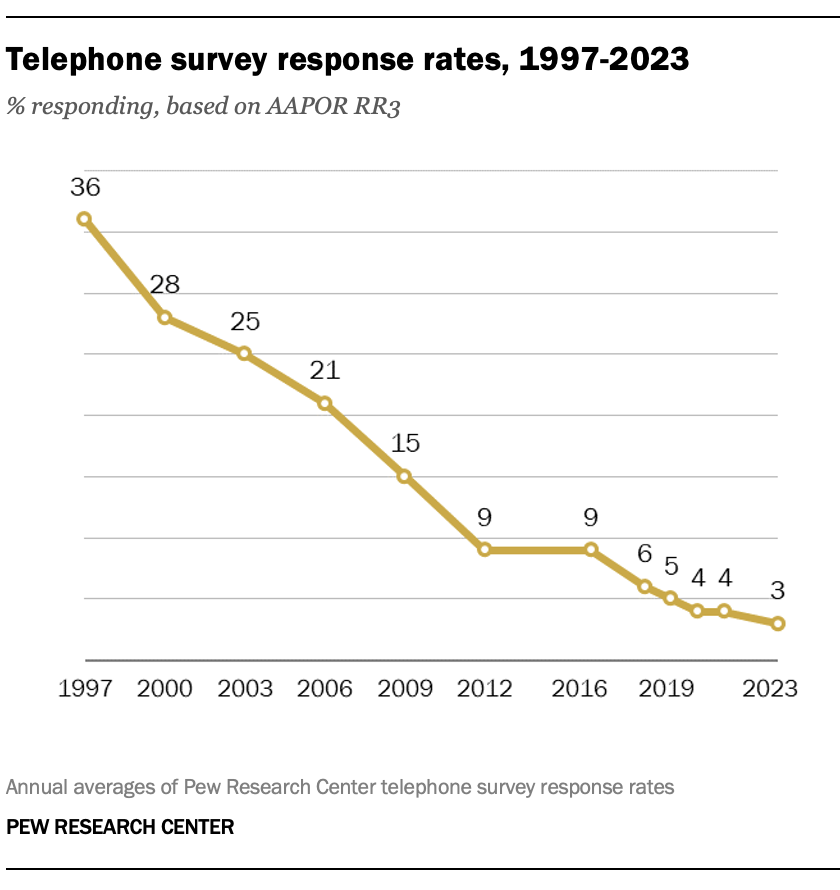The biggest obstacle surveys face today is that it has gotten much harder to reach people and persuade them to consent to an interview. This is mostly a consequence of lifestyle changes – people seem to have busier lives – coupled with a growing wariness about answering calls from unknown numbers or cooperating with requests for information from a person or organization they are not familiar with.
The nature of the problem is evident in the chart below, which shows Pew Research Center’s telephone survey response rates over the past 25 years or so. (The response rate is an estimate of the share of households we try to reach that ultimately complete an interview.)
In part because of this decline in telephone response rates, Pew Research Center decided a few years back to stop relying primarily on telephone surveys and instead switch to using rigorous online surveys.
